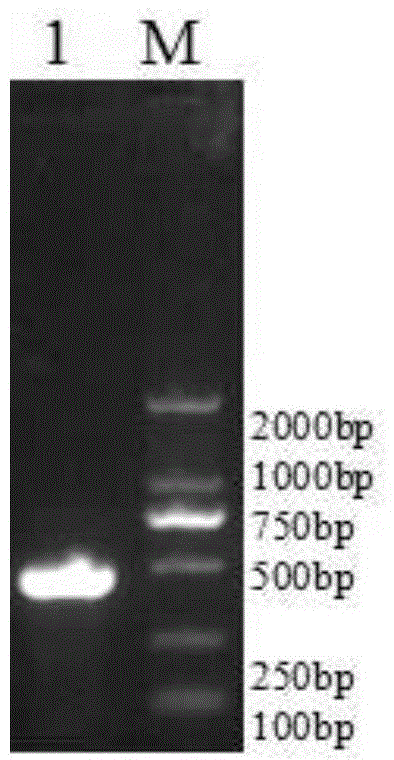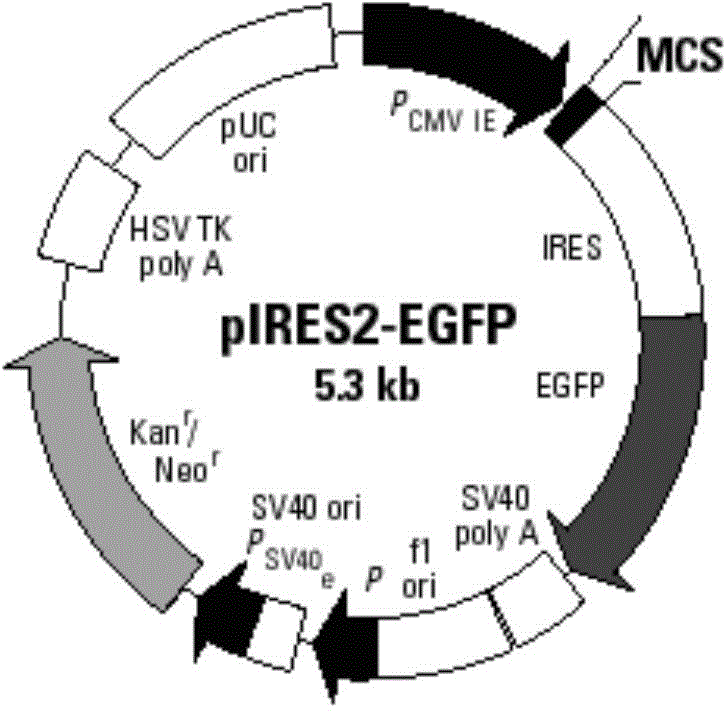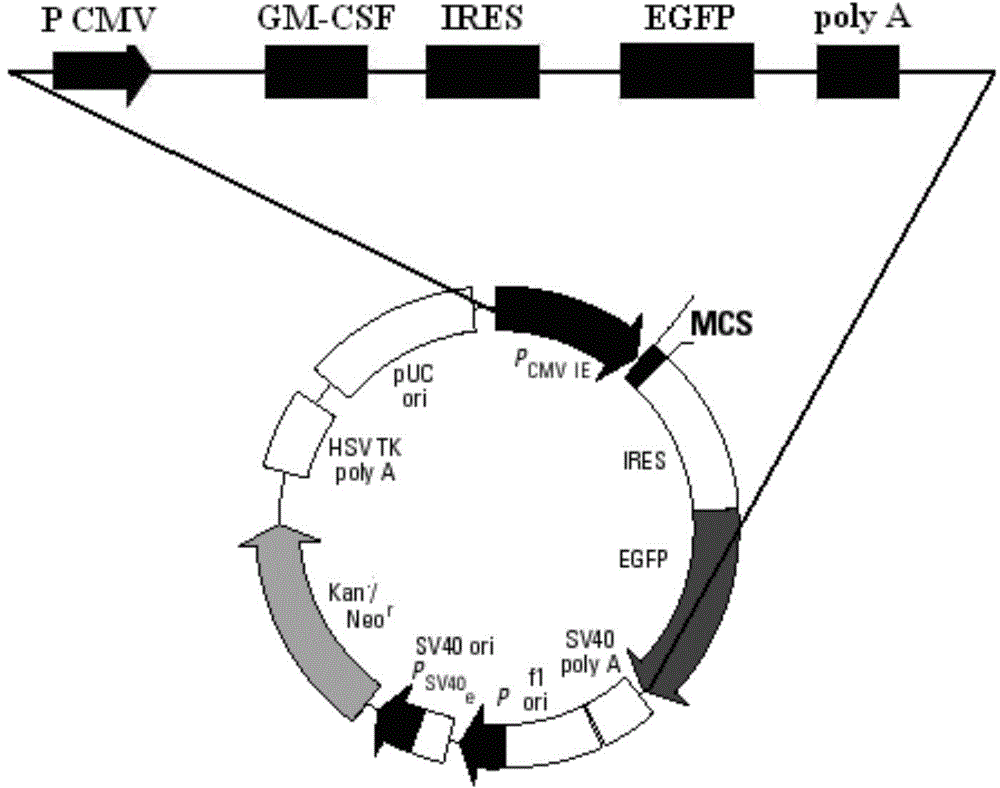GM-CSF (Granulocyte-Macrophage Colony-Stimulating Factor) and MART-1 (Melanoma Antigen Recognized By T-Cells 1) dual-gene co-expression recombinant vector and preparation method and application thereof
A technology of GM-CSF and MART-1, which is applied in gene therapy, recombinant DNA technology, and the use of vectors to introduce foreign genetic material, etc., can solve the problems of lack of immunotherapy targeting, immune regulation, and low anti-tumor ability. Achieve good melanoma immunotherapy effect, promote T cell immune response, and expand the effect of anti-tumor immune effect
- Summary
- Abstract
- Description
- Claims
- Application Information
AI Technical Summary
Problems solved by technology
Method used
Image
Examples
Embodiment 1
[0070] Example 1: Obtaining GM-CSF Gene Fragments Containing Specific Restriction Sites
[0071] 1. Primer design
[0072] According to the nucleotide sequence of the GM-CSF gene (as shown in SEQ ID NO: 1 in the sequence listing) and the expected insertion multiple cloning site on the pIRES2-EGFP plasmid vector, design specific primers as follows:
[0073] GM-CSF upstream primer (as shown in SEQ ID NO:4 in the sequence listing):
[0074] 5'-CG GAATTC ATGTGGCTGCAGA-3' (the underlined part is the EcoR I restriction site sequence),
[0075] GM-CSF downstream primer (as shown in SEQ ID NO:5 in the sequence listing):
[0076] 5'-TT GGATCC TCACTCCTGGACTGGCT-3' (the underlined part is the sequence of the restriction site of BamH I).
[0077] 2. Obtain cDNA template
[0078]TRIzon method was used to extract RNA from CIK cells (Cytokine-Induced Killer, cytokine-induced killer cells) or mononuclear cells isolated from human peripheral blood (TRIzon total RNA extraction kit was p...
Embodiment 2
[0085] Example 2: Construction of pIRES2-GM-CSF-EGFP recombinant vector
[0086] Using restriction endonucleases EcoR I and BamH I, digest the pIRES2-EGFP plasmid (the multiple cloning site of the plasmid contains EcoR I and BamH I restriction sites) and the GM-CSF gene fragment obtained in Example 1, respectively , to obtain the linearized pIRES2-EGFP vector after digestion and the GM-CSF gene sequence after digestion; use T4 DNA ligase system for ligation reaction, incubate at 22°C for 30 minutes, and then inactivate at 70°C for 5 minutes, Construct the pIRES2-GM-CSF-EGFP recombinant vector (such as image 3 shown).
[0087] Structural features of the pIRES2-EGFP plasmid (eg figure 2 Shown) It can be seen that after the GM-CSF gene is inserted into the multiple cloning site of the pIRES2-EGFP plasmid, it is located upstream of the plasmid vector's own sequence IRES (such as image 3 shown), that is, the GM-CSF and EGFP sequences were expressed separately under the same p...
Embodiment 3
[0115] Example 3: Double PCR method to obtain the MART-1 gene fragment with restriction endonuclease cohesive ends
[0116] According to the MART-1 gene sequence and the expected insertion multiple cloning site on the pIRES2-EGFP plasmid vector, two pairs of primers with different lengths and sticky ends of restriction endonucleases were designed; RNA extracted from melanoma cell A375 was reversed The transcribed cDNA was used as a template, and the above two pairs of primers were used for PCR amplification to obtain two PCR amplification products; the two PCR amplification products were mixed and then denatured and annealed sequentially to obtain four MART-1 gene fragments , where the two ends of the two MART-1 gene fragments have restriction endonuclease cohesive ends, so that the MART-1 gene fragments can be directionally connected to the plasmid vector without restriction endonuclease digestion. in the multiple cloning site.
[0117] Compared with the traditional PCR prod...
PUM
 Login to View More
Login to View More Abstract
Description
Claims
Application Information
 Login to View More
Login to View More - R&D
- Intellectual Property
- Life Sciences
- Materials
- Tech Scout
- Unparalleled Data Quality
- Higher Quality Content
- 60% Fewer Hallucinations
Browse by: Latest US Patents, China's latest patents, Technical Efficacy Thesaurus, Application Domain, Technology Topic, Popular Technical Reports.
© 2025 PatSnap. All rights reserved.Legal|Privacy policy|Modern Slavery Act Transparency Statement|Sitemap|About US| Contact US: help@patsnap.com



